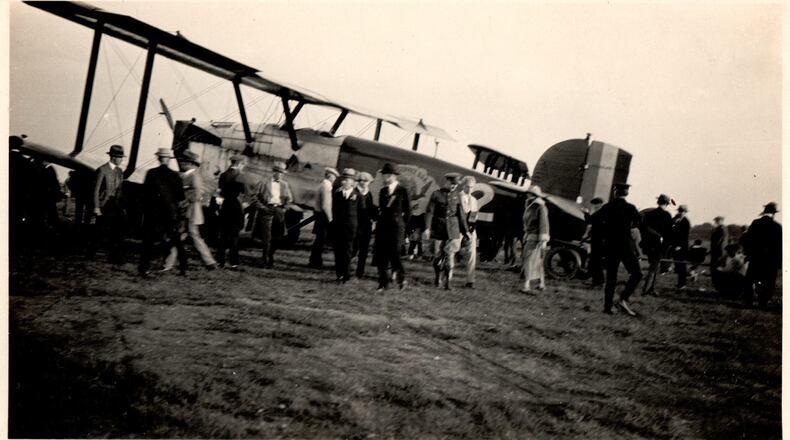The “World Cruisers” as they are sometimes called, actually flew to Dayton on the evening of Sept. 13, 1924, noted Kevin Rusnak, historian for the Air Force Life Cycle Management Center (AFLCMC) at Wright-Patterson Air Force Base — that massive installation that counts McCook as a predecessor in its long development.
The next day, the 14th, McCook held the equivalent of an “open house” for crowds of people, Rusnak said.
The Sept. 13, 1924 edition of the Dayton Daily News reported that crowds gathered on the banks of the Great Miami River long before the planes’ expected arrival.
The Douglas World Cruiser was the plane that managed the first globe-circling flight in aviation history, AFLCMC noted in its own retrospective account of the centennial anniversary.
A quartet of Douglas World Cruiser airplanes left Seattle on April 6, 1924, heading west via Alaska, AFLCMC recounted.
Recall that the Air Force wasn’t born until Sept. 18, 1947. For the round-the-world mission, the Army selected the World Cruiser biplane which carried a single engine capable of reaching a top speed of 120 mph.
At McCook Field, just north of downtown Dayton, pilot and engineer Lt Erik Nelson helped design the prototype, test it, and went on to participate in the globe-spanning trek, AFLCMC said.
McCook was where innovations such as the parachute, increasingly powerful aircraft engines, aircraft pressurization and other crucial technologies were pursued or refined.
And the World Cruisers themselves were modified from the assembly line by McCook Field tinkerers.
In all, four World Cruisers took part, piloted by experienced pilots and backed by copilots who could act as mechanics.
“The thought of circling the globe in an ‘aeroplane’ was considered impossible by many, but the Army Air Service said: ‘We can do that,’” wrote Arizona aviation buff Mike Lentes in a column sent to the Dayton Daily News.
The four planes were named the “Seattle,” the “Chicago,” the “Boston,” and the “New Orleans.”
Just two of them made it around the world, according to the National Air and Space Museum, which says the New Orleans and the Chicago completed the 27,553-mile flight.
Those two aircraft stopped at McCook Field for three days, Sept. 14 to 16.
“In 1924, the thought of flying around the world was thought to be unlikely by most people,” Lentes said in a phone interview. It was only 21 years prior that the Wright Brothers flew at Kitty Hawk, he noted. “That was a tremendous milestone.”
The aircraft themselves, built for the purpose of spanning the globe, were unusual.
“Everywhere they landed — and they landed at 28 different spots around the world — they were front-page news wherever they stopped,” said Lentes, who says he owns a collection of aviation relics and artifacts in the Prescott Valley of central Arizona, where he lives. “It was such a momentous occasion.”
In 1924, aviation wasn’t the routine phenomenon it is today. And flying around the world was a show-stopper.
“It was in its infancy,” Lentes said. “And the thought of flying around the world was an impossible thought for most people.”
Given the amount of ocean to crossed, planners realized they needed aircraft that could land on water for refueling by ships or emergencies, AFLCMC noted.
Since the Army didn’t use seaplanes, they solicited contracts aircraft that could be fitted with either wheels or floats, the center said.
Another crucial conversion boosted fuel capacity from 115 gallons to more than 600.
Douglas won the contract with a version of its DT-2 Navy torpedo bomber, as the “Douglas World Cruiser” in August 1923.
The company received $258,000 for a prototype, with four operational versions with the first one delivered in just 45 days, AFLCMC said.
About the Author




